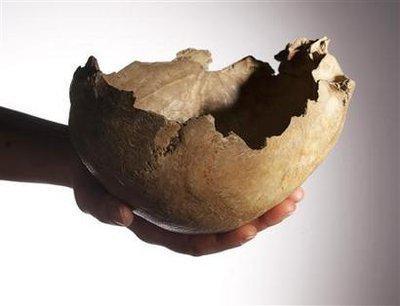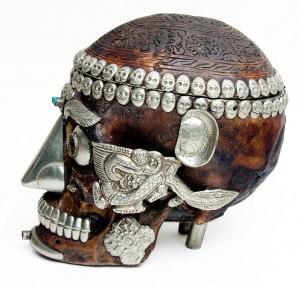A recent article by Bello and colleagues, published in PLoS One (open access), has generated much attention in the press and blogosphere. The authors report on the earliest directly dated human skull caps, which were excavated from Gough’s Cave in England and are 14,000 years old. Although we cannot determine the precise use of these drinking cups or bowls, it is fairly obvious the skulls were processed for ritual use. In all likelihood, the ritual was related to supernatural beliefs.
Here is what remains of one apparently unlucky Paleolithic hunter-gatherer:

Although it seems certain that the fully modern people who created the skull cups or bowls had robust soul beliefs, arising from commonsense dualism, these beliefs were probably less intense than those which prompt Tibetan monks to decorate the skulls of colleagues like this:

In 2008, Tubbs and colleagues reported on “The Intriguing History of the Human Calvaria: Sinister and Religious.” It comprehensively reviews the ritual use of human skull caps in historic time and includes many wonderful pictures. The article appears, however, in the strangest of places: a journal titled Child’s Nervous System.
It left me wondering why a group of physicians (i.e., the authors) became interested in skull cap rituals and decided to publish on the subject in this journal. Are there children who suffer from a nervous disorder that causes them to obsess over skull caps? If the ubiquitous and overwrought clothing of Ed Hardy is any indication, perhaps so.

